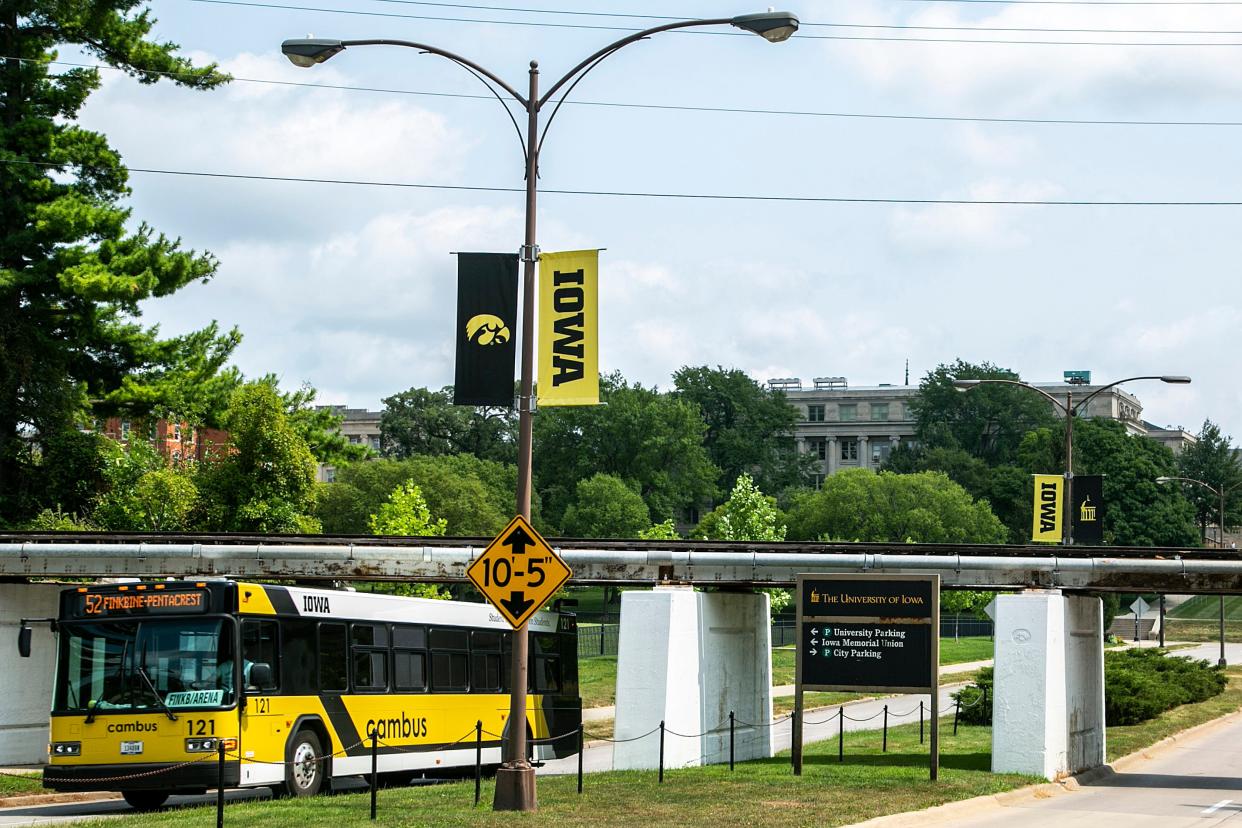Battery-operated passenger train from Iowa City to North Liberty possible as soon as 2025

Passenger trains have not run on the CRANDIC railway since the 1950s. That may soon change.
Greater Iowa City, Inc. recently presented plans for a battery-powered passenger train on the CRANDIC rail line that will run between Iowa City and North Liberty
Greater Iowa City, Inc. representatives were optimistic at the Joint Entities Meeting that a "live study" of a passenger rail program would work.
Passenger stops will include the Iowa River Landing, outside of the North Liberty Hy-Vee, along Burlington Street, near the Stanley Museum of Art, the Oakdale Campus, and the University of Iowa's 'west campus', near the school's public health building.
Greater Iowa City, Inc. hopes the study allows the passenger train to expand throughout Johnson County, even traveling to and from Solon. Local government and the Johnson County Metropolitan Planning Organization, MPO, will use the live study to assess ridership and climate goals and determine whether to continue the lease or outright purchase the train cars.
Current estimates have the passenger cars up and running by the fall of 2025. Cost estimates for the study and the permanent train infrastructure have not been made public.
How will the passenger train study work?
The pilot program would be anchored by a partnership with Pop-Up Metro, a Pennsylvania-based company that will provide the battery-operated trains. The company will also handle train maintenance, battery charging, and other infrastructure needs throughout the lease.
Pop-Up Metro estimates a ride from North Liberty to a stop near the University of Iowa's on-campus medical facilities would take only about 13 minutes.
Pop-Up Metro is owned by the Railroad Development Corporation, the same company that owns the Iowa Interstate Railroad system.
Temporary platforms would be rented and erected at stops along the route during the study. Seven proposed stops were shared during a Joint Entities Meeting last week.
Traveling northbound, these include:
Dubuque Street near Prentiss Street
Burlington Street, near the Stanley Museum of Art and UI Main Library
"West Campus" near the University of Iowa College of Public Health building
Iowa River Landing near 5th Street and the Iowa River Trail
Oakdale Campus near Oakdale Boulevard
Forevergreen Road near Hy-Vee
West Penn Street near the future site of the North Liberty Community Pantry

More: Iowa 6-week 'heartbeat' abortion ban to take effect July 29, Polk County judge rules
Transportation for the future
Better Together 2030 Executive Director Cady Gerlach said passenger train cars could provide reliable public transportation and allow people to live further from their jobs.
Better Together 2030 is an economic development partnership between the Iowa City Area Business Partnership, the Iowa City Area Development Group, Think Iowa City, and the Iowa City Downtown District to help Johnson County and the Iowa City-Coralville corridor through the COVID-19 pandemic.
“Better Together 2030 sets forth guiding principles of how Johnson County communities can work together toward a shared future," according to the organization's website.
From 2022: Talk of renewing passenger rail on CRANDIC line stalls in Johnson County

How much will rides cost
The battery-powered passenger trains could have a very minor impact on residential pocketbooks.
Train times can be fluid based on demand. The "coordinating entity" that controls the passenger rail line — likely the county's MPO — would determine the price of a ride — if there is one at all.
"I think that fare-free has shown that people are really more likely to use it if it is free and (cost) is not a barrier," she said.
Gerlach said they hope to develop the passenger trains into a regional transportation system that connects residents to several different towns.
"My real dream here is that this is the stepping stone to a coordinated regional transit system because you might need one to actually make this work," Gerlach said.
More: Cant-miss summer fun in Johnson Co. from live music to movies in the park and Swisher Fun Days
Hurdles lie ahead but project is cost lower than in past
The CRANDIC line has frequently been mentioned as an opportunity for the county to expand public transportation, but the discussion has regularly hit roadblocks, or enthusiasm has faded.
A passenger train line running through multiple cities would require plenty of cooperation between local and county governments, line operators, and train engineers.
Gerlach said that the University of Iowa would also be a key player.
"I think it's the time to have a hard conversation with them about a lot of things and a lot of expectations that we need to have of them as a community partner," Gerlach said. "Because they're a wonderful community partner, with the hospital and the university, and you know that we need them, but they also need us."
CRANDIC operators initially said 'no'
Initial passenger train plans were derailed in 2022 after CRANDIC ownership wasn't interested in reviving the commuter rail. The last passenger ride on the CRANDIC was more than 70 years ago.
The next hurdle arrives when the CRANDIC budget is approved this summer. Negotiations will begin between the planning organizations and the rail operators to hopefully jump-start the live study.
Local Johnson County leaders are planning a site visit to Pennsylvania in mid-August to ride the battery-operated Pop-Up Metro trains. Officials could choose to go with a more permanent rail line as well, using traditional train engines and rail cars but at an increased cost.
A paved rail line?
Johnson County is also analyzing the feasibility and economic impact of paving over the CRANDIC rail line, which would allow a bus to avoid traffic and operate like a trolley or street car.
Results from the study are expected later this summer or early in the fall.
Ryan Hansen covers local government and crime for the Press-Citizen. He can be reached at [email protected] or on X, formerly known as Twitter, @ryanhansen01.
This article originally appeared on Iowa City Press-Citizen: Battery-operated passenger trains could come to Iowa City in 2025
